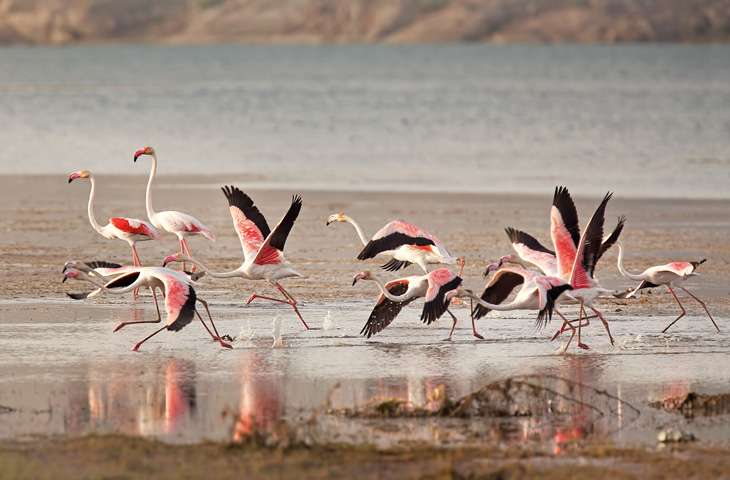JAWAI book review: In the land of the leopard, man & beast live in peace

It is a sad fact that in today's world, the wealth of a country is judged solely on the proliferation of urbanisaton and industry. In times like these, when the measure of success is determined on investment figures, it's easy for governments to forget about that other vital resource that actually gives India her beauty - the environment.
As we strive for greater 'development', our natural beauty is increasingly under threat. And with it, the fauna that relies on it. While we've woken up to the need to protect these animals, our focus is largely on the tiger or, at most, the elephant. The support from the public, thanks largely to the visibility tiger and elephant campaigns have received, has ensured that efforts to protect them have had some measure of success.
Other animals aren't so lucky.
Also read -JAWAI and the need for a conversation about conservation
Now, JAWAI - Land of the Leopard, a stunning book that documents India's 'other wildlife, more specifically the wildlife of the Jawai region in Rajasthan's Pali district, is set to remind us all of the stunning animals our country has to offer and hopefully, hopefully, stir up a conversation about conservation.
Discovering Jawai
Jawai is anything but a regular landscape. It has hills, 850-million-year-old rock formations, a stunning reservoir, bursts of forest and, as a result of all these factors, a plethora of animals and birds. The most popular among these are the the region's stunning leopards that stalk the land, but the biodiversity includes wolves, crocodiles and over 200 species of birds.


Jaisal Singh discovered this area in 1995 while visiting the region with the Jodhpur polo team, but it wasn't until almost 20 years later that he truly discovered the beauty of Jawai. Speaking to Catch, Jaisal remembers revisiting the area in 2013 on a safari, an experience he describes as 'bizarre'. It's not hard to understand why either.
Jawai is unlike any other place. Here, man and animal don't clash but co-exist. The people of Jawai, the semi-nomadic Rabari people have lived cheek to jowl with the area's animals for centuries, to the point where animal-human conflict is almost unheard of.


In fact, the proliferation of temples in these parts has resulted in the leopard being regarded as a manifestation of divinity. Thus, when local livestock inevitably falls prey to one of the big cats, it is viewed by the locals as an offering to the gods rather than a loss. Now, the government also compensates locals for such losses, only furthering this unique human-animal dynamic.
Also read - Endangered snow leopard makes an appearance in north Sikkim
JAWAI perfectly captures all of this, documenting life in Jawai in a series of stunningly vibrant photos.
The conservation tourism aspect
But the point of JAWAI isn't just to document the area's vast natural beauty. It's a tool to further the message of conservation that Jaisal and his wife Anjali espouse with their luxury camp - JAWAI.
Through the camp, the Singhs hope to introduce people to the incredible fauna India has to offer while also educating and encouraging conservation. As Jaisal told us, "Until you actually go and experience it, you're not going to love it, or even know whether you love it. And if you love it, maybe you'll protect it."


The camp is also unique in its approach to tourism, taking the area's locals on board, making them stakeholders in the conservation process. Not only do the locals find employment through the camp, the camp also works on improving the surrounding community.


By involving the locals, not only does the camp benefit from the centuries of ancestral knowledge of the area, they encourage them to preserve the natural beauty as it directly benefits them. It is a unique approach to minimising human-animal conflict that generally defines areas where animal habitat meets human settlements.
The Singhs hope that both the book as well as the camp bring awareness to the beacon of conservation that Jawai has become, hopefully inspiring other efforts around the country.
More from Catch - Up close with Jawai's unusual leopards - and a leopard-tracker to match







![BJP's Kapil Mishra recreates Shankar Mahadevan’s ‘Breathless’ song to highlight Delhi pollution [WATCH] BJP's Kapil Mishra recreates Shankar Mahadevan’s ‘Breathless’ song to highlight Delhi pollution [WATCH]](https://images.catchnews.com/upload/2022/11/03/kapil-mishra_240884_300x172.png)

![Anupam Kher shares pictures of his toned body on 67th birthday [MUST SEE] Anupam Kher shares pictures of his toned body on 67th birthday [MUST SEE]](https://images.catchnews.com/upload/2022/03/07/Anupam_kher_231145_300x172.jpg)






